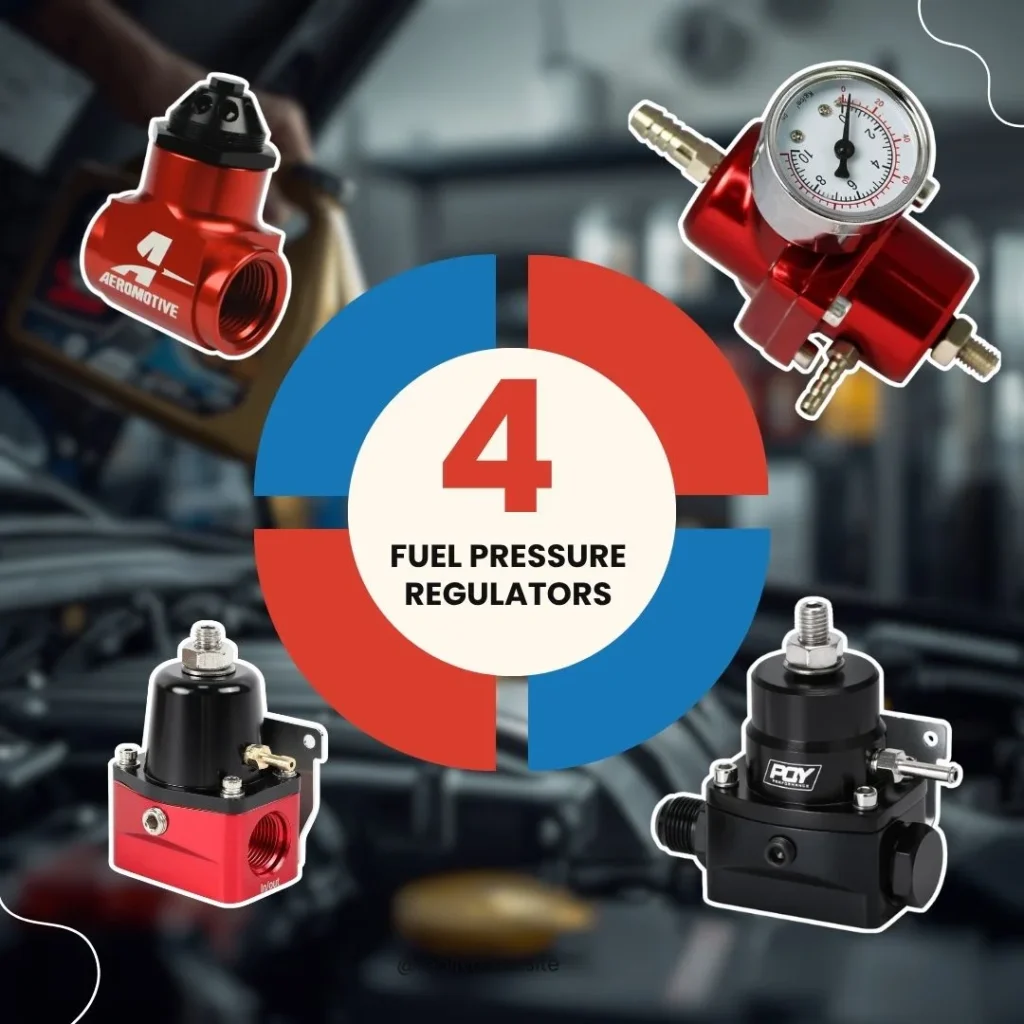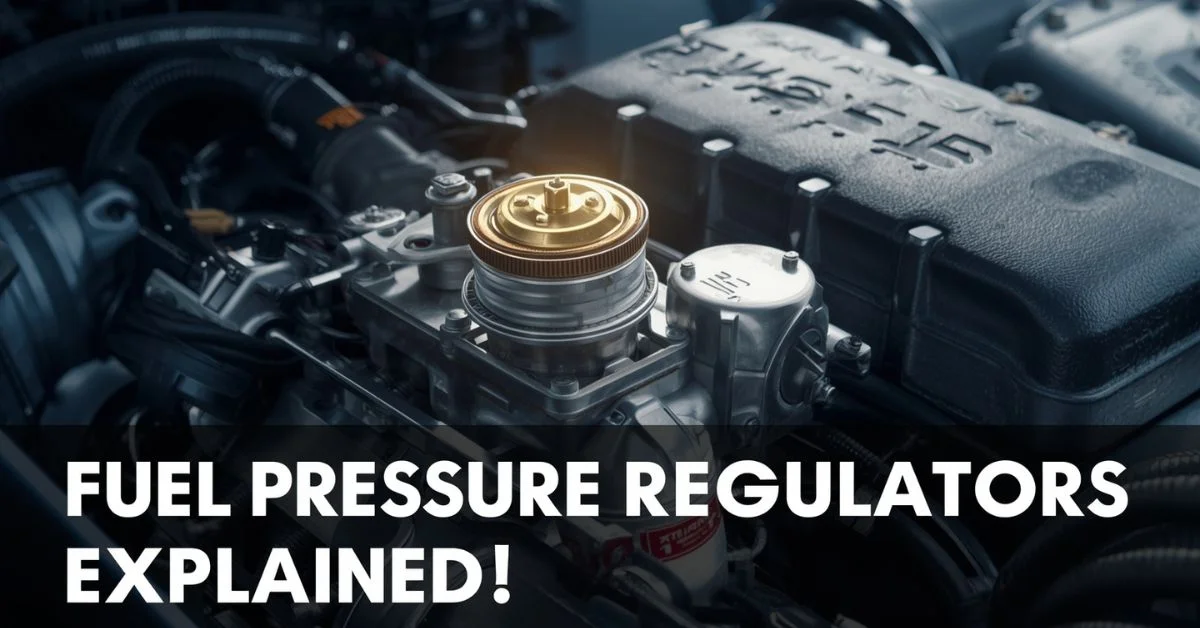Ever wondered what keeps your engine running smoothly, delivering the perfect mix of power and efficiency every time you hit the road? Meet the fuel pressure regulator, a small yet powerful component that plays a huge role in your vehicle’s performance. This unsung hero ensures your engine gets the right amount of fuel at exactly the right pressure, keeping everything balanced for optimal power, fuel economy, and cleaner emissions. But when it starts to fail, things can quickly go downhill, think rough idling, poor mileage, or even engine damage. In this guide, we’ll break down how the fuel pressure regulator works, why it’s so important, and how to spot trouble before it hits your wallet.
What Is a Fuel Pressure Regulator?
A fuel pressure regulator is a precision-engineered valve that maintains consistent fuel pressure in your vehicle’s fuel injection system. Located typically on the fuel rail or inside the fuel tank on newer vehicles, this component acts as a gatekeeper between the fuel pump and the engine’s injectors. The regulator uses a spring-loaded diaphragm mechanism to balance fuel pressure against vacuum or manifold pressure, ensuring that excess fuel returns to the tank when pressure exceeds the specified threshold.
The basic operation involves three key connections: fuel inlet from the pump, fuel outlet to the injectors, and a return line to the fuel tank. Some modern vehicles use return less fuel systems where the regulator is integrated into the fuel pump assembly inside the tank, eliminating the need for a separate return line and improving efficiency.
How Does a Fuel Pressure Regulator Work?
Understanding the mechanics of a fuel pressure regulator helps diagnose problems when they arise. The device operates on a simple yet effective principle of pressure balance. Inside the regulator housing, a diaphragm separates two chambers one connected to fuel pressure and the other to engine vacuum. A spring provides preset tension that determines the base fuel pressure.
During normal operation, fuel flows from the pump through the regulator to the fuel rail and injectors. When fuel pressure exceeds the predetermined level, it overcomes the spring tension and opens the valve, allowing excess fuel to return to the tank. This continuous regulation ensures stable fuel delivery regardless of engine demands.
The vacuum reference connection plays a crucial role in dynamic pressure adjustment. During acceleration when manifold vacuum drops, the regulator increases fuel pressure to compensate. Conversely, during deceleration with high vacuum, pressure decreases, maintaining the optimal pressure differential across the injectors for precise fuel metering.
Types of Fuel Pressure Regulators
Vacuum-Referenced Regulators
These traditional regulators connect to the intake manifold via a vacuum hose. They adjust fuel pressure in response to engine load changes, increasing pressure under acceleration and decreasing it during idle and deceleration. Most vehicles manufactured before 2000 utilize this configuration.
Non-Vacuum (1:1) Regulators
These regulators maintain constant fuel pressure regardless of manifold vacuum. They’re commonly used in forced induction applications, aftermarket performance setups, and some modern naturally aspirated engines where precise electronic control compensates for load variations.
Returnless System Regulators
Found in many contemporary vehicles, these regulators mount inside the fuel tank as part of the fuel pump module. They eliminate the return line, reducing vapor emissions and improving fuel temperature management. The electronic control module monitors pressure through sensors and adjusts pump speed accordingly.

Adjustable Performance Regulators
Aftermarket adjustable fuel pressure regulators allow tuners to modify base fuel pressure for performance applications. These units feature external adjustment mechanisms and are essential for vehicles with modified engines, turbochargers, or aftermarket fuel injection systems.
Common Fuel Pressure Regulator Problems and Symptoms
Recognizing the signs of a failing fuel pressure regulator can prevent more serious engine damage and costly repairs. Here are the most common symptoms:
Engine Performance Issues
A malfunctioning fuel pressure regulator typically manifests as rough idle, hesitation during acceleration, or reduced power output. When the regulator fails to maintain proper pressure, the air-fuel mixture becomes either too rich or too lean, causing combustion inefficiency.
Fuel Economy Deterioration
Excessive fuel pressure from a stuck-closed regulator leads to overly rich fuel mixture, dramatically increasing consumption. Conversely, insufficient pressure from a stuck-open regulator causes lean conditions requiring the engine to work harder, also reducing efficiency.
Starting Difficulties
Hard starting, especially after the vehicle sits for extended periods, often indicates a leaking fuel pressure regulator. When the regulator’s diaphragm ruptures, fuel pressure bleeds off quickly after engine shutdown, requiring extended cranking to rebuild pressure.
Black Smoke from Exhaust
Visible black smoke indicates extremely rich fuel mixture, often caused by a regulator stuck in the closed position, preventing excess fuel from returning to the tank. This condition wastes fuel and can damage catalytic converters.
Fuel Leaks and Odors
External fuel leaks around the regulator or strong gasoline odors suggest seal failure or housing cracks. This dangerous condition requires immediate attention to prevent fire hazards.
Check Engine Light Activation
Modern vehicles with fuel pressure sensors will trigger diagnostic trouble codes (DTCs) when pressure falls outside acceptable parameters. Common codes include P0089 (fuel pressure regulator performance) and P0190 (fuel rail pressure sensor circuit).
Fuel Pressure Regulator Failure Causes
| Cause | Description | Prevention |
| Contaminated Fuel | Dirt, rust, and debris damage the diaphragm and valve seat | Use quality fuel, replace fuel filters regularly |
| Diaphragm Deterioration | Age and fuel additives degrade rubber components | Follow manufacturer replacement intervals |
| Spring Fatigue | Extended use weakens the regulator spring | Replace during major fuel system service |
| Vacuum Line Issues | Cracked or disconnected vacuum hoses affect regulation | Inspect vacuum lines during routine maintenance |
| Extreme Temperatures | Heat cycles cause material expansion and contraction | Ensure proper engine cooling system operation |
| Excessive Fuel Pressure | Faulty fuel pump generates pressure beyond specifications | Test fuel pump output during diagnosis |
Testing and Diagnosing Fuel Pressure Regulator Issues
Proper diagnosis requires systematic testing with appropriate tools. A fuel pressure gauge is essential for accurate assessment.
Pressure Testing Procedure
Connect a fuel pressure gauge to the test port on the fuel rail. Start the engine and observe the reading at idle, comparing it to manufacturer specifications. Typical pressure ranges from 35-65 PSI for port injection systems and 500-2000 PSI for direct injection systems.
Vacuum Response Test
For vacuum-referenced regulators, disconnect and reconnect the vacuum hose while monitoring fuel pressure. Pressure should increase by approximately 5-10 PSI when vacuum is removed. No change indicates regulator failure.
Pressure Hold Test
Turn the ignition off and monitor how quickly pressure drops. The system should maintain pressure for at least 20 minutes. Rapid pressure loss suggests internal regulator leakage or injector problems.
Dead-Head Pressure Test
Pinch or clamp the fuel return line momentarily while monitoring pressure. Pressure should rise significantly, confirming the fuel pump can generate adequate pressure. If pressure doesn’t increase substantially, suspect pump failure rather than regulator issues.
Fuel Pressure Regulator Replacement and Maintenance
Replacement Considerations
When replacing a fuel pressure regulator, always use OEM or high-quality aftermarket parts that meet original specifications. Cheaper alternatives often fail prematurely and can cause additional fuel system damage.
Installation Best Practices
● Relieve fuel system pressure completely before removal
● Replace all O-rings and seals even if they appear intact
● Torque all connections to manufacturer specifications
● Inspect vacuum hoses and replace if cracked or deteriorated
● Clear any diagnostic trouble codes after installation
● Perform pressure testing to verify proper operation
Maintenance Recommendations
Regular fuel filter replacement extends fuel pressure regulator life by preventing contamination. Most manufacturers recommend filter changes every 30,000-40,000 miles, though severe conditions may require more frequent service. Additionally, using quality fuel from reputable stations reduces sediment and water contamination that damages fuel system components.
Conclusion
The fuel pressure regulator serves as a vital component in your vehicle’s fuel delivery system, maintaining the precise pressure required for optimal engine performance, efficiency, and longevity. Understanding how this component functions, recognizing failure symptoms, and performing timely maintenance prevents costly repairs and ensures reliable vehicle operation. Regular inspection of your fuel system, including the fuel pressure regulator, fuel filter, and associated components, protects your investment and prevents inconvenient breakdowns.
When symptoms arise, prompt diagnosis and professional repair restore proper operation and prevent cascading damage to other fuel system components. Whether you’re a DIY enthusiast or rely on professional service, knowledge about fuel pressure regulators empowers you to make informed decisions about vehicle maintenance. Don’t wait for complete failure—address fuel pressure issues promptly to maintain your vehicle’s performance and avoid expensive repairs down the road.
If your vehicle’s fuel system isn’t performing as it should, a faulty fuel pressure regulator might not be the only culprit. At All American Motors Hub, we offer a wide selection of high-quality used engines and transmissions that restore your car’s power and efficiency without breaking the bank.
Frequently Asked Question
How long does a fuel pressure regulator typically last?
A properly maintained fuel pressure regulator can last 100,000-150,000 miles or longer. However, factors like fuel quality, driving conditions, and maintenance history significantly affect lifespan. Vehicles operated in dusty environments or with contaminated fuel may experience earlier failure.
Can I drive with a bad fuel pressure regulator?
While possible, driving with a failing fuel pressure regulator risks engine damage, reduced performance, poor fuel economy, and potential safety hazards from fuel leaks. Extended operation with incorrect fuel pressure can damage injectors, oxygen sensors, and catalytic converters, resulting in significantly higher repair costs.
How much does fuel pressure regulator replacement cost?
Replacement costs vary widely based on vehicle make, model, and regulator location. External regulators typically cost $50-$150 for parts with 1-2 hours’ labor, totaling $200-$400. In-tank regulators integrated with fuel pump assemblies cost $300-$800 for parts plus 2-4 hours’ labor, totaling $600-$1,500 or more.
What fuel pressure should my vehicle have?
Proper fuel pressure varies by engine design. Port fuel injection systems typically require 35-65 PSI, while gasoline direct injection systems operate at 500-2,000 PSI or higher. Always consult your vehicle’s service manual for specific pressure specifications and testing procedures.

